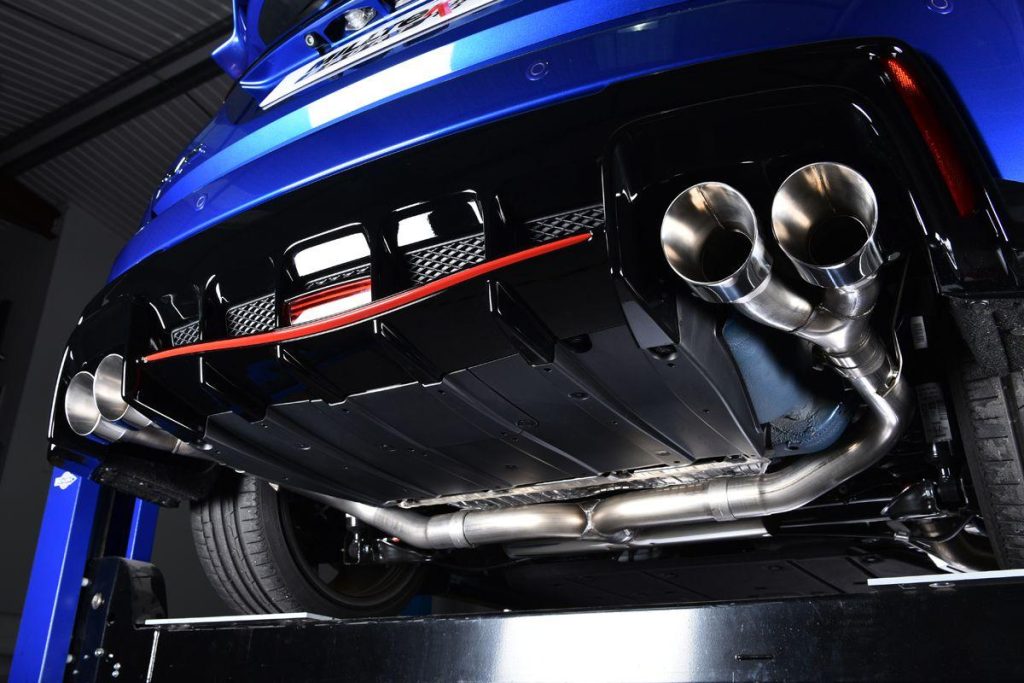
An internal combustion engine’s exhaust system has a significant impact on a car’s horsepower and sound qualities. The mechanics involved in improving exhaust system efficiency and sound quality are examined in this study. Several approaches are investigated to optimize emissions system design for better performance and the intended sound profile using computational simulations, quantitative evaluation, and validation through experimentation. The results offer significant perspectives for automotive professionals and enthusiasts who seek to improve the mechanical and acoustical aspects of vehicle emission control systems. The Citroen DS3 Exhaust System is designed to gather exhaust emissions from the cylinders, eliminate any potentially dangerous materials, minimize the background noise, and release cleansed emission gases out of the direction of the occupants.
Comprehending Exhaust Systems
Understand how performance exhausts work and how they affect your car’s performance before getting into the finer points . The purpose of a vehicle’s emission management system is to steer exhaust emissions, which include carbon monoxide as well as other pollutants, out of the automobile while preventing them from the combustion chamber of the engine. It is accomplished by working together among several components. This guarantees that the engine runs on clean air, enabling the vehicle’s combustible cycle to continue functioning.
The components of the system that exhausts are a combination of catalytic converters, tailpipes, as well as mufflers. Each of these parts is essential to the overall functionality of the system. To fully understand how these components impact the overall efficiency of your car, it’s critical to comprehend how they communicate with one another.
Select The Type Of Exhaust You Want.
Selecting the type of exhaust system that you wish to install is the first step. Exhaust systems come in three primary varieties: header-back, axle-back, as well as cat-back. Anything between the catalytic converter in the front end through the tailpipe is replaced by a cat-back system; similarly, anything from the rear suspension to the tailpipe is replaced by an axle-back technology; while every component from the combustion engine to the power source tailpipe is replaced by a header-back system. Each type has advantages and disadvantages that vary based on your performance objectives, budget, and legal restrictions.
Strategies for Increasing Performance
Beyond exhaust improvements, there are various techniques to increase a vehicle’s horsepower and performance. Furthermore, when paired with updated exhaust systems, can improve engine power and performance. These techniques include turbo as well as injectors, gearbox lock-up instruments, ECU synchronization and many more.
ECU tuning: ECU tuning is the process of altering the software of the engine control unit to maximise variables such as ignition timing, air-to-fuel ratio, which is also and fuel injection timing.
Computational Simulation:
To examine the flow properties of the exhaust system, computational fluid dynamics, or CFD, simulation is used. CFD studies shed light on problems such as flow limitation, pressure gradients, as well as turbulence by simulating the intricate relationships involving exhaust emissions and system architecture. To reduce flow limitations and maximise exhaust gas evacuation, the models make iterative design alterations, such as changing pipe sizes, lengths, and various bends. Finite element analysis, also known is also used to evaluate the endurance and foundational strength of a system under different operating situations so that design changes do not compromise the dependability of the system.
Empirical Analysis:
This type of analysis measures and examines the performance of exhaust systems in the real world. To measure variables like horsepower, simply torque, as well as combustion gas temperature under various operational circumstances, dynamometer testing is done. Such empirical findings offer insightful commentary for improving the parameters of design and confirming computer models. In addition, acoustic analysis gear is utilized to describe the exhaust of the system’s sound characteristics. The acoustic characteristics of various exhaust systems can be evaluated and optimised to produce desired hearing profiles by recording the levels of sound pressure as well as frequency spectra.
Validation through Experimentation:
Validation through experimentation entails testing and prototyping different exhaust system configurations under real-world circumstances. Exhaust systems prototypes are built using optimal parameters for design that come from experimental research and simulations on computers. Following installation on test automobiles, these working models undergo performance evaluations via track simulations as well as on-road testing. Measurements including acceleration durations, exhaust gas arrangement, and subjective assessments of the noise level are gathered and examined to verify the efficacy of design adjustments. Sustainability testing is also done to evaluate the optimised exhaust systems’ long-term dependability and performance in challenging working environments.
Final words
This dynamics study provides a thorough method for enhancing the sound quality and performance of exhaust systems. Engineers can achieve efficiency and perceptual criteria for exhaust system design by effectively optimising it through the integration of computational modelling, empirical investigation, and experimental validation. The study’s conclusions have consequences for producers, aftermarket tuners, and vehicle enthusiasts who want to improve driving dynamics by using custom exhaust systems. Understanding the complex dynamics of emissions system development will be crucial in satisfying the needs of the automotive industry for performance improvement and sound customisation as vehicle technology advances.

